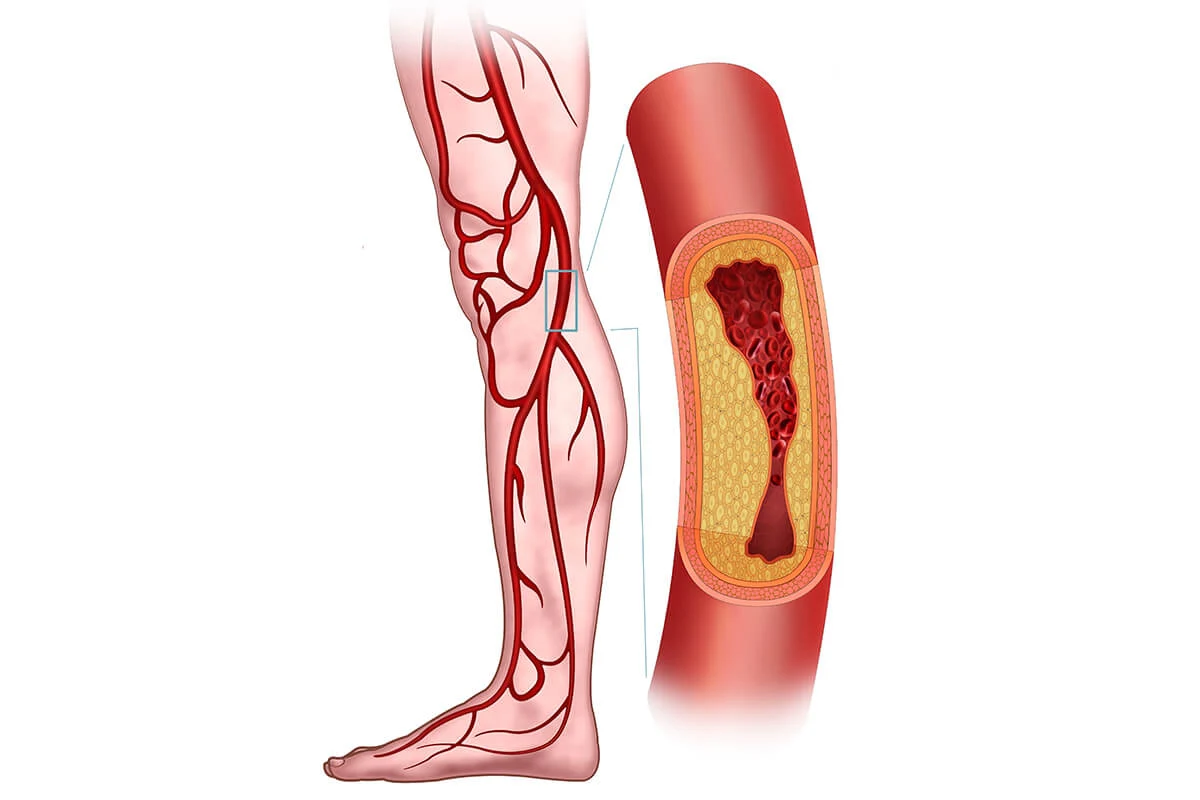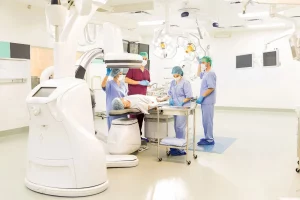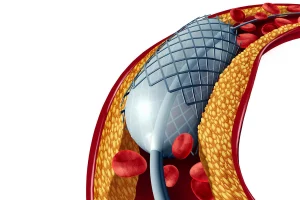Peripheral Angiography and Stenting
Peripheral Angiography
The Turkish equivalent of the term “artery” is “atar damar.” Arteries can be defined as the tube system that carries blood pumped from the heart. The brain, muscles, arms, legs, lungs, skin, and all the organs within the abdomen (such as the liver, stomach, intestines, kidneys, spleen, etc.) receive oxygen and nutrients from the blood carried through the arteries. The term “peripheral artery” refers to the arteries (or atar damarlar) that carry blood to all other tissues and organs outside the heart (as mentioned above).
What is peripheral angioplasty (vascular enlargement) and how is it done?
Narrowed or blocked peripheral arteries can be widened by inserting devices such as balloons, stents (mesh tubes), lasers, small cutting blade devices, ultrasonic sound waves, clot-removing devices, devices emitting radiation to the vessel wall to prevent re-narrowing, and similar tools. The most commonly used devices are balloons and stents, while other devices are used more in specific cases. Peripheral angioplasty can be performed on the brain arteries, arm and leg arteries, aortic artery, main arteries branching from the aortic artery, arteries leading to the lungs, and renal arteries. Depending on the diameter of the opened arteries, the length of the stenosis, the patient’s accompanying diseases, and other factors, a narrowing of between 5-50% can typically occur in the treated artery within the first 6 months after the procedure. You can ask your doctor about the risk of re-narrowing in your case.
Will medication be used before and after the procedure?
Anticoagulant medications are frequently used to prevent clotting during the widening of the narrowings within the vessels. Some of these medications (such as aspirin or its equivalents) can be administered orally before the procedure and may be used for a long time, even for a lifetime, after the procedure. During the procedure, anticoagulant or clot-dissolving medications can also be directly applied into the vessel, along with vasodilator drugs. In some patients, sedatives can also be administered through the vessel.
Are there possible adverse events associated with the interventional (balloon and stent) treatment of peripheral artery disease? What is the risk of the procedure?
The interventional (balloon and stent) treatment of peripheral artery disease is a small-scale surgical procedure. Therefore, during the procedure, certain undesired complications, known as complications, may occur. However, the risk of complications in these procedures is quite low and is often not life-threatening. Pieces or clots may break off from the vessel wall and block other areas of the vessel, a condition known as “embolism.” Rarely, if an embolus forms in the brain during carotid dilation, it can lead to stroke (cerebrovascular accident). If organ damage occurs as a result of embolism, emergency surgery may be necessary in the case of an arm or leg, and in rare cases, gangrene or organ removal may be necessary. Rupture or perforation of the vessel is very rare and may occur depending on the wires passed through the stenotic area and the devices used to dilate the vessel. The incidence is approximately one in a thousand patients. Emergency surgical intervention (surgery) may be required. Dissection of the layers of the vessel may occur during the procedure, often treatable immediately at the time of the procedure by using a stent or by inflating the balloon for an extended period. Emergency surgery may be required very rarely. Spasm (contraction, narrowing) of the vessel may occur during the procedure, causing pain and sometimes damage to the organ supplied by the vessel. Spasm is often corrected by directly administering anti-spasmodic drugs into the vessel; it rarely causes damage. Rarely, the attempted opening of the vessel may result in complete occlusion, which can lead to damage to the organ supplied by the vessel, necessitating emergency surgery. During the dilation of the vessel or due to the administered drugs, heart rate and blood pressure may drop, but this condition is often corrected without causing a problem. Ballooning (aneurysm), rupture, or occlusion of the vessel may rarely occur at the site of entry into the artery, requiring surgery. Rarely, depending on the drugs used during the procedure, bleeding may occur in a completely different area from the procedure site, or in the procedure site, or in the vessel entered. Swelling due to bleeding can occur at the site where the artery is entered, and this swelling often subsides within 3-4 weeks. Renal insufficiency may develop due to the drugs used during the procedure, especially iodinated contrast agents. Although renal insufficiency improves in most patients, in rare cases, patients may require dialysis treatment later in life. Any kind of allergy may develop due to the drugs; however, these can often be controlled with other medications.








